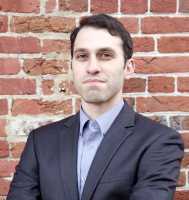
10 Dec Disparities in Hearing Aid Ownership Among Older Adults
MedicalResearch.com Interview with:

Dr. Reed
Nicholas S. Reed, AuD
Assistant Professor | Department of Epidemiology
Core Faculty | Cochlear Center for Hearing and Public Health
Johns Hopkins University Bloomberg School of Public Health
MedicalResearch.com: What is the background for this study?
Response: It is known that hearing aid ownership is relatively low in the United States at less than 20% of adults with hearing loss owning and using hearing aids. However, many national estimates of hearing aid ownership are based on data that is over 10 years old. Our team was interested in trying to understand whether ownership in hearing aids had changed over time. We used data from 2011 to 2018 in a nationally representative (United States) observational cohort (The National Health and Aging Trends Study) of Medicare Beneficiaries aged 70 years and older to estimate the change in hearing aid ownership.
In our analysis, the proportion of Medicare beneficiaries 70 years and older who reported owning and using their hearing aids increased 23.3% from 2011 to 2018. However, this growth in ownership was not equal across all older adults. For example, while White males saw a 28.7% increase in hearing aid ownership, Black females saw only a 5.8% increase over the same 8-year period. Moreover, adults living at less than 100% federal poverty level actually saw an overall 13.0% decrease in hearing aid ownership while those living at more than 200% federal poverty line saw an overall 30.6% increase.
MedicalResearch.com:? What are the main findings?
Response: Several things have happened in that period that may have changed ownership in hearing devices.
First, in the last 10 years, there has been an explosion of research about the importance of hearing loss for our overall health. Specifically, there has been a plethora of research suggesting a link between hearing loss and cognitive decline, falls, and social isolation in large observational cohorts. This data has attracted attention from major news outlets and may result in increased interest in pursuing hearing care.
Second, greater enrollment in Medicare Advantage plans with hearing aid benefits may be driving an increase in ownership.
Lastly, it is plausible that increased recent interest in direct-to-consumer hearing devices may have spurred some small changes in the overall market by improving access to consumers (note: given the design of this study, it is possible that adults who own amplifiers that aren’t Food and Drug Administration approved “hearing aids” are reporting them as hearing aids, it is impossible to distinguish). However, with the regulations from the 2017 Over-the-Counter Hearing Aid Act still undefined by the Food and Drug Administration, this impact may be minimal.
MedicalResearch.com: What should readers take away from your report?
Response: The main finding of this study is that the percentage of older adults who report hearing aid ownership increased in the United States from 2011 to 2018. However, the growth in ownership has been unequal across older adults in the United States. Moreover, it is important to note that a 23.3% increase is in proportional terms. When starting from a relatively low number of adults with hearing loss owning and using hearing aids, the absolute change doesn’t have to be very large to represent a large proportional change. We still have a long way to go before we are providing hearing care to all the adults who may need it.
MedicalResearch.com: What recommendations do you have for future research as a result of this study?
Response: I believe this work supports two areas of future research. First, with the pending regulations for over-the-counter Hearing Aids from the Food and Drug Administration, future work could use this data to assess the impact of over-the-counter hearing aids, which may increase affordability and accessibility, by continuing to characterize hearing aid ownership in the United States. Importantly, in recent years, several large national cohort studies, including the National Health and Aging Trends Study, have added clinical hearing measures to their study design which will allow for more precise estimates of hearing aid ownership among those with hearing loss.
Our study is limited in that we can only look at overall hearing aid ownership among all older Medicare beneficiaries. However, we know two-thirds of adults over 70 years have hearing loss and the important finding from our analysis is the observation of the change overtime, not the specific overall percentage with devices. Second, it is clear that strategies are needed to close the gaps in equality of hearing aid ownership in the United States. This requires rethinking current delivery models and ensuring there are entry points of care that suit the needs of all adults in the United States. Some of this work is ongoing in the form of my colleague Carrie Nieman’s (Johns Hopkins University) work on the Access HEARS trial that aims to provide basic hearing care via community health care workers to improve accessibility and affordability.
I report sitting on the scientific advisory board of Shoebox Inc and Good Machine Studio but have no financial relationships with either entity.
Citation:
Reed NS, Garcia-Morales E, Willink A. Trends in Hearing Aid Ownership Among Older Adults in the United States From 2011 to 2018. JAMA Intern Med. Published online December 07, 2020. doi:10.1001/jamainternmed.2020.5682
The information on MedicalResearch.com is provided for educational purposes only, and is in no way intended to diagnose, cure, or treat any medical or other condition. Always seek the advice of your physician or other qualified health and ask your doctor any questions you may have regarding a medical condition. In addition to all other limitations and disclaimers in this agreement, service provider and its third party providers disclaim any liability or loss in connection with the content provided on this website.
Last Updated on December 10, 2020 by Marie Benz MD FAAD
